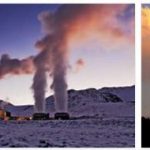Energy and environment
According to Mcat-test-centers, the future of Brazil revolves around the prospect of becoming – as well as an economic giant – also an energy giant. Both production and internal energy consumption are highly diversified, and energy dependence from abroad has been decreasing over the years, reaching only 8% of total consumption. This has happened even though, since the mid-1990s, energy consumption has grown steadily, and today Brazil is the seventh energy consumer in the world (by far the first in Latin America). The Brazilian government aims to achieve self-sufficiency but, given the consumption, this is very unlikely to happen. Although Brazil is already among the top 15 countries in the world for oil production, it still does not have a sufficient number of refining plants. The development of new plants becomes even more urgent if we consider the important discoveries of oil and natural gas reserves in recent years, especially off the coast. Extraction from these reserves could turn Brazil into a net oil exporter. As for natural gas, Brazil produces about half of what it consumes, and is forced to import almost everything else from Bolivia.
In addition to the importance of hydrocarbon reserves, Brazil is characterized by a leading role in the use of renewable energy. The country is the second largest producer of hydroelectricity in the world after China. Thanks to this record, which derives from the large Itaipú power plant (co-managed with Paraguay), from the combustion of Amazon forest timber and from the development of biofuels, Brazilian energy consumption is made up of over 45% renewable energy. Among these, the production of bioethanol is of particular importance .
Brazil is an important reserve for the heritage of world biodiversity: it is estimated that it is the country with the greatest biological diversity in the world, where 13% of recognized species are present, although only 10% have been cataloged. In the national territory there is most of the Amazon forest, which occupies an area of 3.3 million km 2, or 40% of the Brazilian territory (even if the entire Amazon area, called ‘legal Amazon’, covers about 5 million km 2). This factor causes issues such as deforestation, the exploitation of certain types of plantations, intensive farming, water or land pollution and urbanization to be followed with extreme attention not only within national borders, but also by the international community. In 2012, a great stir caused the promulgation of the new forestry code, which provided for a relaxation of controls on the amount of land that farmers must preserve as a forest; Dilma Rousseff has nevertheless decided to veto the promulgation of certain measures. Furthermore, in 2015 the Brazilian government, in the context of the fight against climate change, took a long time to present its national contribution (I ndc) for the reduction of polluting emissions in view of the C op 21 which was held in Paris in December 2015.
Brazil moves away from Catholicism
Since the Portuguese colonization in the sixteenth century, due to forced conversions and European immigration, Brazil has developed as a distinctly Catholic country, coming to host the largest percentage of Catholics in the world.
The 2010 census, however, highlighted a phenomenon that has already been growing for forty years now: the flight of the faithful to the Protestant Churches, in particular Evangelical and Pentecostal Churches. Brazilian Catholics went from 89% of the population (108 million) in the 1980s to 65% (123 million) in 2010, while the number of Protestants has grown from 8 million (7%) to the current 42 (22%). The reasons for this ‘religious commutation’ seem to lie in the excessive conservatism that Brazilians blame the Catholic Church. Unlike the Protestant Churches, which prove to be open to the problems and daily needs of the people and offer innovative opportunities for discussion throughout the territory (even in the favelas), the spokespersons of Catholicism are perceived as disinterested and distant from reality.
The BRICS continue to emerge
In 2001, the famous investment bank Goldman Sachs coined the term Bric to indicate the four countries that considered themselves the economies of the future: Brazil, Russia, India and China. Ten years later, an emerging African was also added, the Republic of South Africa, which extended the acronym to Brics. The five countries are home to nearly three billion residents, make up about 20% of the total economy and have contributed to more than half of the world’s GDP growth in the last decade. The BRICS currently hold 70% of the world’s sovereign wealth fund assets and their combined foreign exchange reserves would amount to 4400 billion dollars. Their trade also accounts for 16, 8% of international trade while intra-Brics trade flows reached $ 282 billion in 2012 which for Goldman Sachs and the International Monetary Fund became $ 500 billion in 2015. However, these estimates could be revised downwards, due to the slowdown in the growth of global trade compared to levels prior to the global economic crisis. Despite the worrying flaws accused during the global crisis, the BRICS have continued to launch new deals in the economic and financial field. Particularly important is the one that gave rise to the Fortaleza Declaration, signed on July 15, 2014. On this occasion, the five leaders committed themselves to creating the New Development Bank (Ndb), an alternative financial reality to the Bank world that arises, among the ambitious objectives, the strengthening of cooperation between members and the strengthening of multilateral relations with other countries. The capital already subscribed by the shareholders is currently 50 billion dollars, for the most part Chinese, which, however, can go up to a maximum of 100 billion. Among the offices, Brazil has been given the presidency of the Board of Directors. The NDB became operational on 21 July 2015 following an official ceremony held in Shanghai. Before this important step, the BRICS had already entered into two agreements in the economic-financial field: the first multilateral for infrastructural co-financing for Africa, the second for the creation of a BRICS Affairs Council, composed of five representatives for each of the member countries,
The importance of bioethanol for Brazil
Bioethanol is a liquid fuel obtained from biomass and its current development is mainly due to the need to find substitutes for fuels derived from fossil sources, such as petrol and diesel. Its use serves to cover the needs in the transport sector, which is the one that contributes most significantly to gas emissions. The production of biofuels (bioethanol and biodiesel) has not only economic or geostrategic motivations – high oil prices and production concentrated in a few countries, not always reliable – but is also driven by the desire to contain climate change. Globally, Brazil is both the largest producer and the first consumer of bioethanol (based on sugar cane). Behind Brazil, equipped with 430 plants, the second world producers of bioethanol are the USA; together, the two countries account for nearly three-quarters of the world’s demand for this biofuel. The current position of world leader is no coincidence: if on the one hand the endowments of natural resources have played a fundamental role, on the other Brazil has gained a long experience in the sector, supported by the entry into force, already in 1975, of the National Alcohol Program, renamed the ‘Proalcohol Program’. The role of bioethanol for the Brazilian economy is ambivalent: if on the one hand it reduces the dependence on fossil fuels for refueling vehicles, on the other it raises controversies for the reduction of agricultural land available for food production. Brazil is currently the country with the largest number of vehicles’ flex-fuel ‘in the world (about 23 million). The consumption of bioethanol could further increase, as the Brazilian government has eliminated subsidies for gasoline, thus making it cheaper to use traditional fuels.









